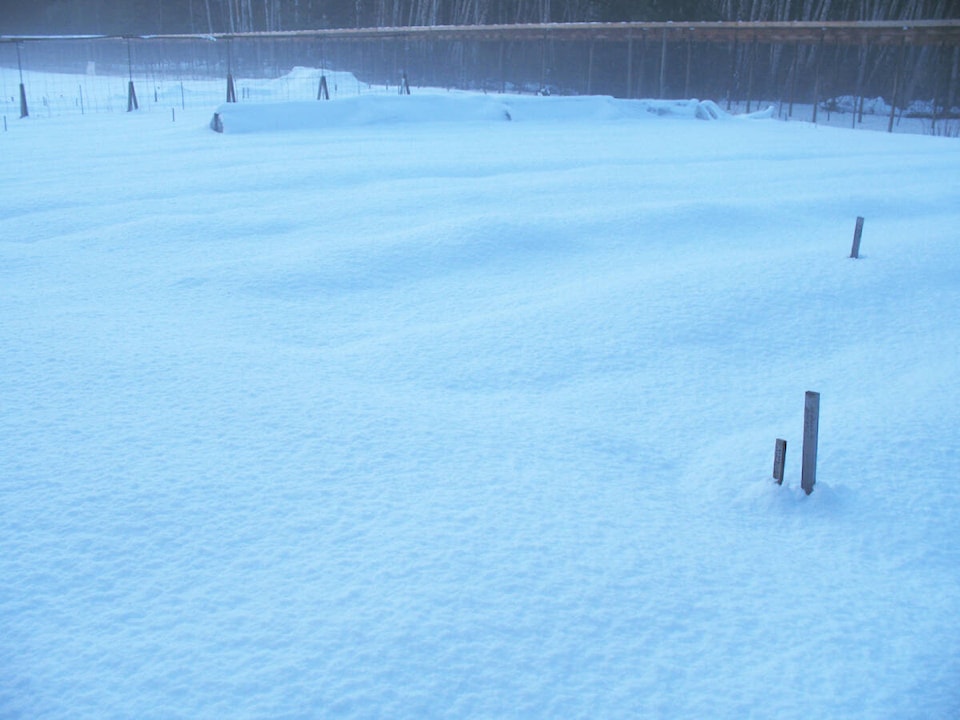By Mary Lowther
The peas I sowed two weeks ago during our warm(er) snap should survive the present blanket of snow and then we’ll see if they can outgrow predation from the inevitable slugs. In the meantime, I’m still planning this year’s garden.
When setting out a garden, it’s a good idea to leave a small patch for wild life to flourish, like Queen Anne’s lace, columbine, lupins and heather. Bees, predatory bugs like dragon flies, birds, frogs, lovely slug-eating snakes and spiders that eat all kinds of garden pests can thrive in a wild area, so it behooves a serious gardener to save a spot for these creatures. None of the snakes on Vancouver Island are poisonous and apparently they all eat slugs, so it’s a happy gardener who finds one in his plot.
In his book, Attracting Backyard Wildlife, Bill Merilees explains that wildlife has three requirements: shelter, water and food. Our present garden that we’ve cut out of the forest is surrounded by wildlife, but I want to foster helpful species, so I’m planting a few I like and pulling out invasive ones like blackberry, morning glory, broom bush and purple deadnettle. A watering jug that provides a steady water supply when turned upside down can be nestled among the plants for wildlife, and they’ll find their own food, especially the predatory bugs and spiders when they see what’s eating my garden.
I’ve saved some lupin and columbine seeds and we have some heather that I can divide and I think I’ll buy a beauty bush because bees love them. David has commissioned a friend in Hedley to make us a bird’s nest that will look just dandy in the wild area.
Our garden is surrounded on three sides by forest, but even a balcony can afford a small wild area as Bill Merilees points out: birds will be the most likely species to find the balcony, and nearby trees and bushes often provide shelter so the apartment dweller need only provide water and food for birds to visit. Merilees recommends a few plants that attract birds; for example, fuschia, jewelweed, nasturtium, columnar cedar trees, mugho pine and morning glory. If there’s room, a nest box and/or a small bird feeder can be installed, even if it’s just a flat tray, and a shallow dish of water with a flat stone in the middle for the birds to stand on can be put near the plants.
Please contact mary_lowther@yahoo.ca with questions and suggestions since I need all the help I can get.
